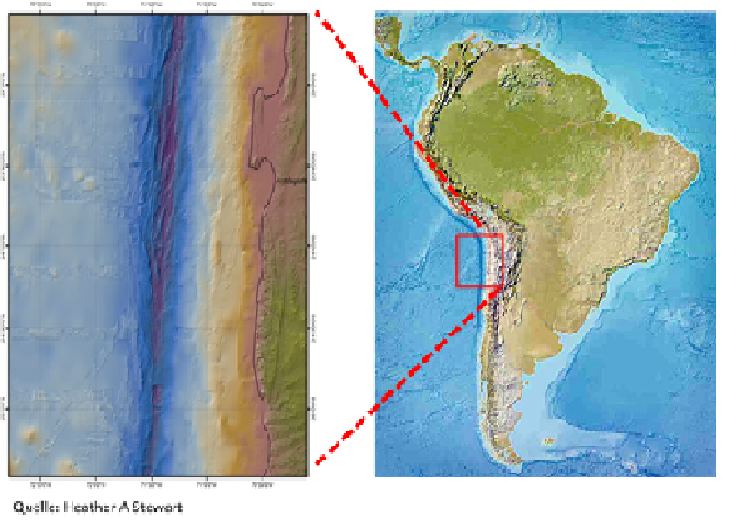Scientists to Explore the Depths of the Atacama Trench
On March 2nd, an international team of researchers, led by Professor Ronnie N. Glud, University of Southern Denmark and Dr. Frank Wenzhöfer, Max Planck Institute for Marine Microbiology in Bremen, embarked on a 32 days cruise on the German research vessel SONNE to the Atacama Trench in the Pacific Ocean.
Atacama Trench, located off the coasts of Peru and Chile, is one of the deepest ocean trenches in the world and has a maximum depth of 8,065 m. It is almost 6,000 kilometers long.
The cruise is part of Gluds’ larger European Research Council Advanced Research Grant project HADES-ERC, aimed at understanding bio-geo-chemical processes and microbiology at the bottom of deep areas of the oceans. The researchers will investigate a number of sites along the trench with an array of remotely operated instruments.
 There are 27 deep sea trenches in the world. On his next expedition, Professor Ronnie N. Glud and his fellow scientists will investigate sites in the Atacama Trench off Chile. Depths of the target stations will range between 1,000 – 8,065 m. (Heather A. Stewart)
There are 27 deep sea trenches in the world. On his next expedition, Professor Ronnie N. Glud and his fellow scientists will investigate sites in the Atacama Trench off Chile. Depths of the target stations will range between 1,000 – 8,065 m. (Heather A. Stewart)
Microbial communities play an important role for the function of the global ocean and for life in oceans and on land.
“The deep oceanic trenches are some of the least explored habitats on Earth and presumably host many unknown life forms. Recent investigations indicate that even though the seabed at these depths is exposed to extreme hydrostatic pressure, the trenches represent areas of intensified biological activity in the deep sea”, says project leader Glud, University of Southern Denmark.
“Innovative in situ technologies will be used to explore this extreme marine environment usually ignored because of the technological challenges at this great pressure. We will use a variety of autonomous systems - called landers - to investigate microbial processes directly at the seafloor”, says Frank Wenzhöfer, Max Planck Institute for Marine Microbiology.
The Atacama Trench lies under one of the most productive oceans in the world and therefore the researchers expect it to contain large deposits of organic material, funneled down from trench slopes and overlying waters.
“We expect that the trench sediment will host significant anaerobic degradation of organic material, which makes it a unique site for investigating processes of nitrogen cycling and sulfate reduction at extreme pressure – processes that are presumably mediated by completely unknown microbial communities”, says Glud.

